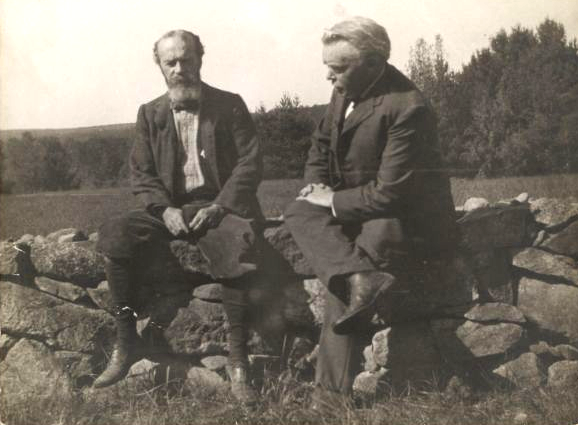Speaking of William James tripping at Harvard, here’s the opening of “The Nitrous Oxide Philosopher,” Dmitri Tymoczko’s 1996 Atlantic article about the philosopher’s experiments in alternate states of consciousness:
“He has short hair and a long brown beard. He is wearing a three-piece suit. One imagines him slumped over his desk, giggling helplessly. Pushed to one side is an apparatus out of a junior-high science experiment: a beaker containing some ammonium nitrate, a few inches of tubing, a cloth bag. Under one hand is a piece of paper, on which he has written, ‘That sounds like nonsense but it is pure on sense!’ He giggles a little more. The writing trails away. He holds his forehead in both hands. He is stoned. He is William James, the American psychologist and philosopher. And for the first time he feels that he is understanding religious mysticism.
The psychedelia of the 1960s was foreshadowed by events in the waning years of the nineteenth century. This first American psychedelic movement began with an anonymous article published in 1874 in The Atlantic Monthly. The article, which was in fact written by James, reviewed The Anaesthetic Revelation and the Gist of Philosophy, a pamphlet arguing that the secrets of religion and philosophy were to be found in the rush of nitrous oxide intoxication. Inspired by this thought, James experimented with the drug, experiencing extraordinary revelations that he immediately committed to paper.
What’s mistake but a kind of take?
What’s nausea but a kind of -ausea?
Sober, drunk, -unk , astonishment. . . .
Agreement–disagreement!!
Emotion–motion!!! . . .
Reconciliation of opposites; sober, drunk, all the same!
Good and evil reconciled in a laugh!
It escapes, it escapes!
But–
What escapes, WHAT escapes?
This experience, which in James’s words involved ‘the strongest emotion’ he had ever had, remained with him throughout his life. “
Tags: Dmitri Tymoczko, William James

